40 years to the legendary Mi-24 combat helicopter (part of 12) in Afghanistan
The original plans of our command did not provide for large-scale military operations. But life has made its own adjustments. Combat helicopters took part in the first combat operation on the morning of January 9, 1980. Units of the 186th motorized rifle regiment, reinforced tanks and by artillery, at the request of the Afghan leadership, they sent from Kunduz to Nakhrin to disarm the 4th artillery regiment of the Afghan army that rebelled at the beginning of the year.
January 7 on alert 1-I (on Mi-24В) and 2-I (on Mi-24А) squadrons of 292-th obvp from Tskhinvali flew to the airfield Vazia-ni. With him on the An-22 helicopters were taken to the airfield Kokaydy, where they collected and flown. A few days later, two squadrons carried out a familiarization flight “beyond the river” with an intermediate landing at the airfield of Kunduz. From there, 13 January crews completed the first sortie. January 14 both squadrons flew to Kunduz. In mid-February 1-I squadron.
25 December 1979 transport planes with paratroopers landed on Afghan airfields in Kabul and Bagram. Simultaneously with them, the Afghan border was crossed by 302-i ovebu, which was redeployed to Jalalabad for a permanent place of deployment. At the same time, the 3 squadron on the Mi-8 arrived from the USSR in Kunduz. In March, crews from the Chernigov 319-first military unit began arriving in the regiment. At the end of March, after a decrease in tensions in northern Afghanistan, the 2-i and 3-i squadrons were also moved to Jalalabad, where they were fighting until July 14 1981.
In the last days of February, an air transfer to the An-22 at the Kokayda airfield of two squadrons of Mi-24D, formed from the crews of the Nivhenian 288 and Raukhovsky 287-th aircraft, which became part of the 34-second mixed air corps -HC-X-NX, began. army.
At the same time, Mi-24 relocated to the border airfields in the foothills of the Pamirs and Turkmenistan to work in northern Afghanistan. In March, 1980 in this country were 302 (Shindand) and 262 (Bagram) Ove, 292 (Jalalabad), and 280 (Kandahar) OWP and 2 Squadron of the 50 13th Kapul (Kabul) .
18 of August of the same year in Jalalabad to strengthen the Tskhinval regiment and replace the personnel of the 2 squadron for the holiday period 10 arrived with crews of the Nivinsky 288-second military aviation with their Mi-24A helicopters. By the end of the year, one squadron of 181 and 335 was registered in Kunduz.
In the spring of 1980, hostilities in Afghanistan intensified. For nine years, the country turned into a huge training ground, where in real conditions military equipment was tested and tactics of its application were tested. During the war years, up to 90% of army helicopter crews visited aviation.
Two or three weeks before the trip, the helicopter pilots practiced combat use at the mountain range near Chirchik and in the desert near Bukhara. In the course of further training, the main attention was paid to combat maneuvering and practicing takeoff and landing on high-altitude platforms.
To increase the take-off weight when working from a high-altitude platform, we remembered the take-off on wheels of the front support proposed by M.L. Milem. The technique of such a take-off in relation to the Mi-24 was developed in LII A.I. Akimov. The test pilots of the Air Force and LII tested this method on the Mi-24D in the mountains of the Caucasus. The helicopter take-off weight, depending on the height of the platform, increased by 500 - 1500 kg as compared to the “airplane-like” take-off.
Sit on the field site tried so that the cab of the car was ahead of the dust cloud. The run was reduced, falling sharply on the engine operating mode, close to take-off, tightening the propeller near the ground itself. At the moment of contact, the pilot took the handle himself, further reducing mileage. With such landings, tires and brake discs quickly deteriorated, more than half of the engines had to be removed early, of which a significant part was due to blade erosion and almost 15% due to surge. Phlegm from the dust that got into the tanks, clogged filters and automatic fuel.
In the training of Mi-24 crews, due attention was paid to combat maneuvering, which allowed thoroughly trained pilots, based on the situations that arise, taking into account the capabilities of the machine, to invent new techniques and maneuvers, often ignoring the limits of the restrictions provided for in the instructions. They left the attack with a cabrirovan to 50 ° and a sharp turn at the top point, where the car almost turned on its side, instantly finding itself on the opposite course, facing the enemy for a second strike.
Recently, there have been publications in which pilots who flew Mi-24D and Mi-24В helicopters to perform combat missions in local conflicts try to criticize the understated, in their opinion, restrictions on these machines when maneuvering. They are proud to report that they have neglected the limitations and significantly exceeded them.
They are completely unaware that in this case they introduced un-calculated damage to the dynamic system of the helicopter (propeller blades, skew, thrust, bearings, etc.). For one violation of the limit, they spent hundreds of hours of the resource. Soon it turned out that some elements of the carrier system did not actually have a resource, although formally in passports
tah he attended. Under the influence of unsurpassed dynamic loads, the production of tread auto-tread bearing was occurring, the bearings themselves were destroyed. The moment came when the helicopter collapsed in the air. However, everything that happened in a combat situation was blamed on combat losses. Therefore, the reasoning of pseudo-practitioners on this score will remain on their conscience: they are clearly, as people say, "born in a shirt."
In April, 1980 was acquainted with the “Army amateur activity” in Afghanistan by the general designer of the MVZ. M.L. Mile - M.N. Tishchenko. The piloting of the local aces made an indelible impression on him, and in the summer, improvements to the Mi-24 began, taking into account the Afghan combat experience. Arrived factory brigades overregulated the fuel automatics of the engines, preferring the possibility of burnout of the combustion chambers due to exceeding the permissible gas temperature in front of the turbine for a shortage of power in the rarefied hot air.
The installed ROMs sifted out sand and dust at the engine inlet, cleaning the air on the 70 - 75%, and reduced the wear of the compressor blades several times. First of all, ROMs were equipped with TVZ-117 engines installed on Mi-24D, which, on a small gas on the ground, because of higher revs, more actively sucked the sand. With 1981, the first Mi-24В with high-altitude TVZ-117В engines began to arrive in Afghanistan, having more power at 15 - 20% in conditions of hot high mountains. These engines were equipped with repair and Mi-24D. In the 40 Air Force, only crews were replaced, and the vehicles were working for wear - at best they reached out to repair. Over the year, OXV lost up to 12% of helicopters with an average annual Mi-24 raid around 380 hours, but individual machines produced up to 1000 hours.
During the war years, the work of the evacuation and restoration service in army aviation was debugged and returned to service in 1987 to 90% of damaged helicopters.
As the intensification of hostilities improved tactics. The composition of the shock groups was optimized, the main tactical unit of which was a link of four helicopters. The link allowed to implement most of the tactics worked out. The main emphasis was on surprise, continuity of fire impact and mutual cover.
In Afghan conditions, the maximum combat load of the Mi-24 was 1000 kg: two FAB-500 bombs, or four FAB-250, or up to ten OFAB-JUM on the MBD2-67 multi-lock bomb racks. "Two hundred and fifty" and "five hundred" were used to destroy the fortifications of dushmans. The bulk of the bombs used accounted for "weave". Of the total number of bombs expended on 1980 by the 40 Army's aviation, high-explosive and high-explosive fragmentation bombs were 78%, incendiary -3%. The accuracy of the bombing is strong.
influenced by the typical for the air currents of the mountains, as well as surface winds, demolished bombs from the target. Accounting for these streams in the ASP-17В and VBB-24 sights was not provided. Due to the lack of suitable targets for the enemy, the crews of the helicopters in 1980 spent the entire 33 ATGM 9М114 and 9М17.
To improve the effectiveness of practiced integrated use of weapons. From a distance in 1,5 km, the pilot launched the NAR, fired from a rifle gun one kilometer from the target weapons, giving the navigator-operator the opportunity to focus on bombing. Bombs destroyed the masonry of the fortresses and the thick adobe walls of the duvaly, filling up with fragments of dushmans.
Widely used by NAR Army Aviation. Simple and robust 57-mm C-5 were not effective enough. Powerful C-8 was first released from helicopters in April 1983, near Kandahar. The OFCh of this 3,6 kg rocket provided the necessary high-explosive effect, and the three-gram fragments of the “shirt” struck manpower outside the shelters in the 10 - 12 radius. The twenty-four crews also limitedly used large-caliber NAR C-24 with 123-kg OFF. It turned out that only the most experienced crews can launch them with the Mi-24.
Passed severe tests in the Afghan war and gunships helicopter. The first vehicles involved in the fighting were equipped with large-caliber machine guns A-12,7 and YakB-12,7. The latter had superiority in the mass of a second salvo, but was not distinguished by high reliability in local climatic conditions. Widely used suspended containers UPK-23-250 with 23-mm gun GSH-23L. He was on 56 kg lighter container GUV with a grenade launcher. 23-mm shells, possessing a large stock of kinetic energy, from safe distances "got" dushmans, hiding behind the dvuvalami.
Shelling of Soviet helicopters in Afghanistan began from the very first days of the war. While the rebels did not have experience in fighting aviation, combat damage from small arms mainly fell on the fuselage (12,8%), main rotor blades (11,9%), end and tail beams (12,2%). With the appearance of foreign instructors among dushmans, the fire became more aimed, and the combat damage became more significant. Having mastered the air defense tactics in the mountains, the enemy skillfully organized the defense of their camps.
The MANPADS missile could disrupt the pilot's mental equilibrium even over the center of Kabul (up to 50% of the loss of aviation equipment accounted for shelling in the airfield area). To the protection of the airfield by ground troops in 1984, was added round-the-clock patrol and air cover. That year 62 launch was recorded, 1985 was recorded in 141, in 1986 downed machines, the Mujahideen spent 26 missiles, for three and a half months 847 had 1987 air launches that destroyed 86 air targets (at that time DUMMAN had 18) MANPADS, of which 341 of “Stinger” type), by the end of 47, the number of “stingers” of the enemy has increased to 1987.
Any planes and helicopters were fired as soon as they dropped below 3000. The crews of the Mi-24 were tasked to protect passenger and military transport aircraft with people on board in a dangerous height range. Each transporter accompanied up to six Mi-24: one pair scurried around the area, looking for enemy firing points, the second accompanied in front or on either side a descending or taking off car, the third covered it from behind and throughout the glide path; the second and third pairs and the transport ship themselves "saluted" with ASO traps. Kabul "twenty-fours", which most often had to deal with escort, equipped with a double set of ASO-2В. Noticing the launch of MANPADS, the crew of the Mi-24 turned to meet the rocket, let go of the traps and took a hit.
In 1987, the air defense of the Mujahideen increased so much that it forced the leadership of the 40 Army's air force to almost completely abandon the use of helicopters for fire support of the troops. Bombing strikes inflicted airplanes, and helicopters were already engaged in "cleaning" the area. Helicopter pilots proceeded to deliver night strikes with mixed groups.
The dushman movement was fueled by everything necessary from abroad. Thousands of caravans in hundreds of paths streamed along sparsely populated areas of the country. From 1984, the command of OXV attracted special forces to fight them. To give the special forces battalions the necessary secrecy, mobility and fire support, four Mi-8 and Mi-24 from 335 (Jalalabad) and 280 (Kandahar) obvp and 262-ove (Bagram) were assigned to them. Provision of the Kabul special forces company was assigned to 2-th and 3-th squadron of 50-th poops (Kabul).
At the end of 1985, each brigade was assigned to a squadron specially formed for this purpose. 15-th ove worked with 239-th brigade, and 22-ove worked with 205-th. Each of them consisted of four units and had 16 Mi-8 and 16 Mi-24.
12 in May 1987 in the area of the settlement of Baraki in the south of Afghanistan, captain N.S. The Maidan from 335-ovp noticed movement in the “green” of the Abchekan gorge. After passing over the thickets, the pilots found a large caravan. Maidanov landed special forces from his Mi-8 at the entrance to the gorge, and his follower Y. Kuznetsov landed at the exit. A pair of cover-up Mi-24s began to fire on the caravan. After the landing of the G-8, they immediately went to Baraki for reinforcements. To defeat the caravan it took special forces, reinforced armor-group. The fight with dushmans lasted all night until the morning. When they began to count trophies, then one of the Strela MANPADS accumulated over fifty. 205 and 239 were removed from Afghanistan to the USSR in August 1988, where they were soon disbanded.
Almost half of the helicopters in Afghanistan were lost due to fires and explosions of the fuel system on board with its firing. The tanks, which accounted for 90% of damage to the fuel system, began to fill, as on the Su-25, with a polyurethane foam sponge. This protection negated the fires on board, although it had to be paid for by increasing the dry mass of the machine by 40 kg and wasting time on washing the fuel filters clogged with polyurethane chips.
In the summer of 1980, after the appearance of MANPADS in dushmans, the designers began to implement a set of modifications to the Mi-24 related to the increase in survivability. At the nozzles of the engines, an EVA was installed, which, due to the large resistance and inconvenience in operation, did not immediately take root and became mandatory only with 1983, when the enemy mastered the use of MANPADS well. From 1980, packages of two 32-charging cartridges ASO-2В with cartridges for LO-56 traps were hung on steel tapes under the tail boom, and with 1987 - two “fan” blocks of three cartridges each on the sides of the fuselage behind the wing ; behind the helicopter they created a wide trail of false targets.
With 1982, the protection complex was crowned by the active interference station SOEP-B1A (product L-166 or “Lipa”), which turned out to be very effective at first. Blocks ASO-2B were used not only for ground attack, but also when flying over dangerous areas. A typical "ASO-maneuver" with a rocket launch was observed was in a sharp lapel with a simultaneous salvo of traps.
In the last months of the war helicopter pilots lost three crews of the Mi-24. This happened on August 21 and September 30 1988 and February 1 1989. In the latter case, after 25 minutes of flight, the communication with the crew consisting of the commander of 50 squadron Col. AS was interrupted. Golovanova and navigator-operator Senior Lieutenant S.V. Pedestrian, paving the route Kabul - Pul-i-Khumri. Their Mi-24P, facing the mountain, found three days later in 8 km from the Salang pass.
- ON. Cleaver
- 40 years to the legendary Mi-24 combat helicopter (part of 1) Creation
40 years to the legendary combat helicopter Mi-24 (part 2) Modifications A, B and D
40 years to the legendary Mi-24 combat helicopter (part of 3) Modification B
40 years of the legendary combat helicopter Mi-24 (part of 4) Modifications P and VP
40 years to the legendary combat helicopter Mi-24 (part of 5) Modification Mon
40 years to the legendary Mi-24 combat helicopter (part of 6). Modifications of P, K and VM
40 years to the legendary Mi-24 combat helicopter (7 part) Mi-35
40 years to the legendary Mi-24 combat helicopter (part of 8) Foreign upgrade options
40 years to the legendary Mi-24 combat helicopter (part of 9)
40 years to the legendary Mi-24 combat helicopter (part of 10) Technical specification
40 years to the legendary Mi-24 combat helicopter (part of 11) Mastering in structural units
40 years to the legendary Mi-24 combat helicopter (part of 12) in Afghanistan
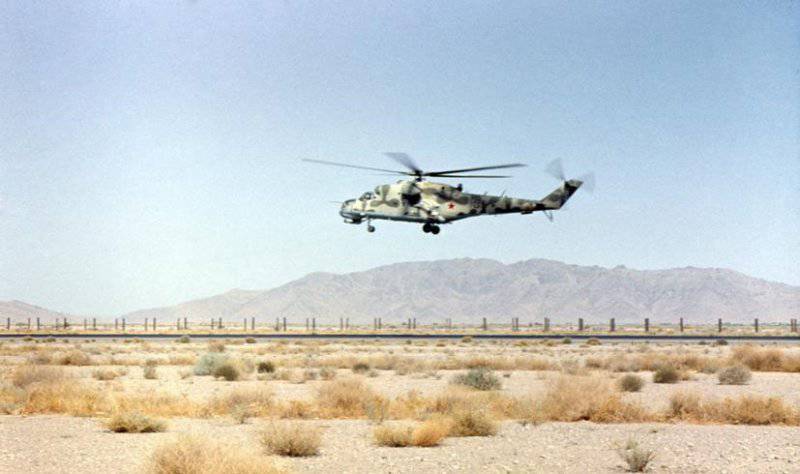
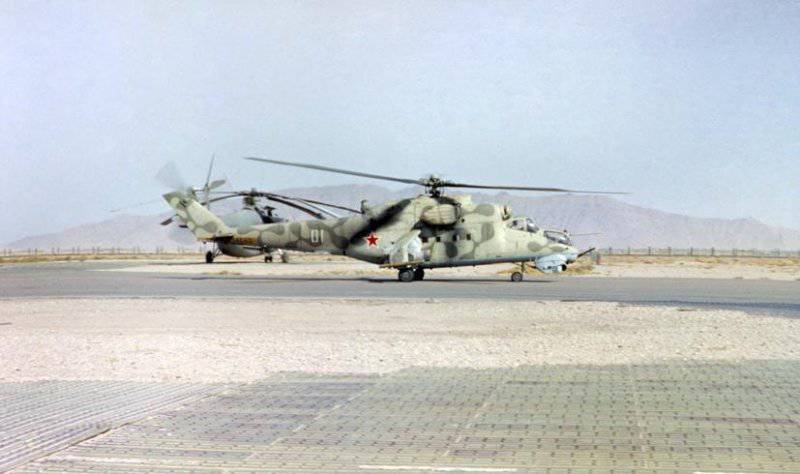
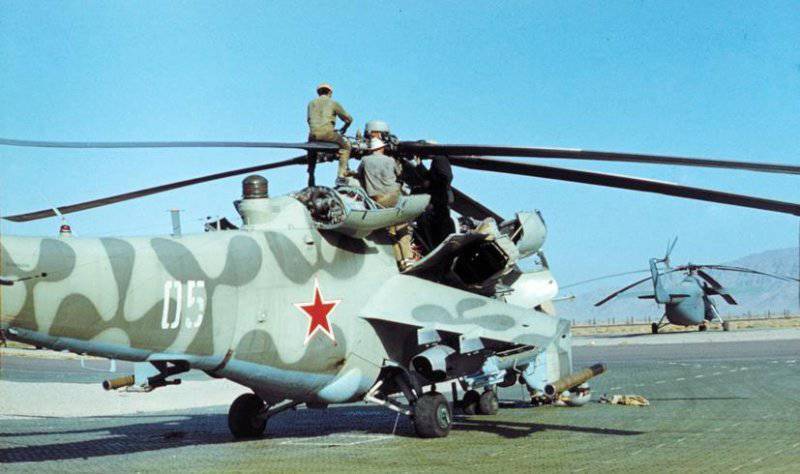
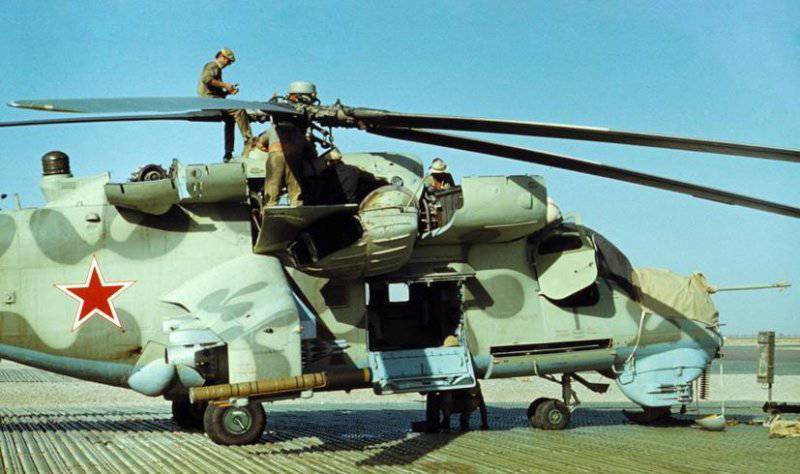
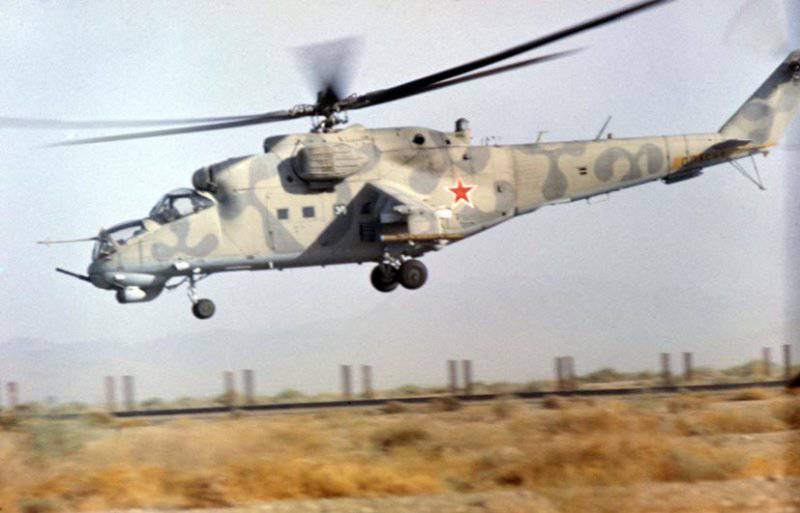
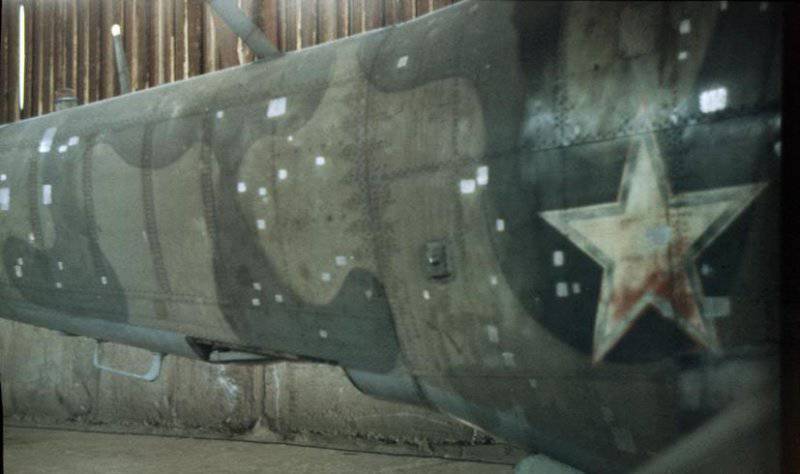
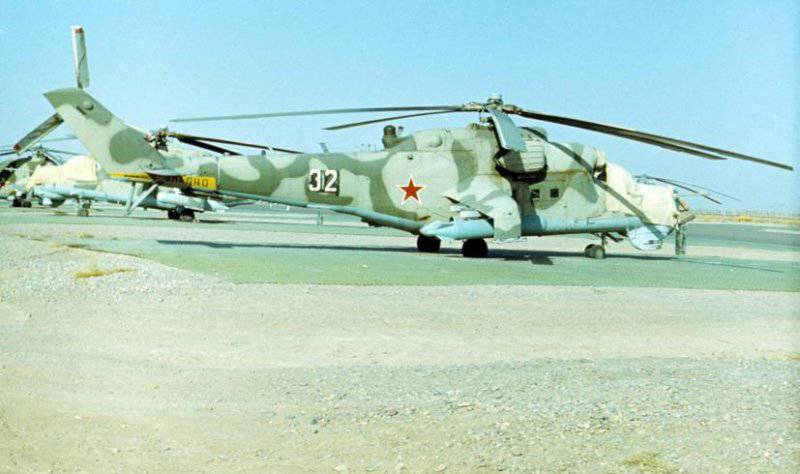
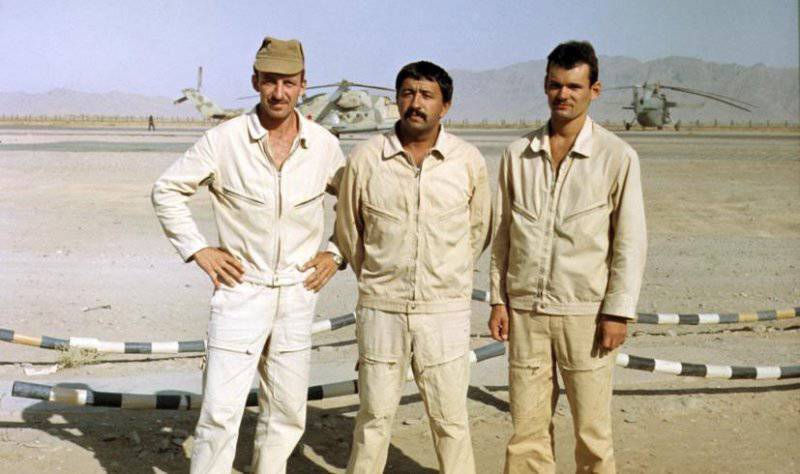
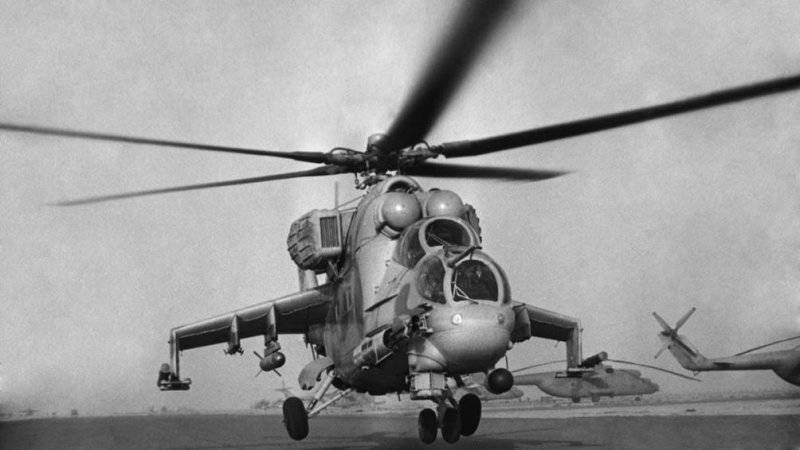
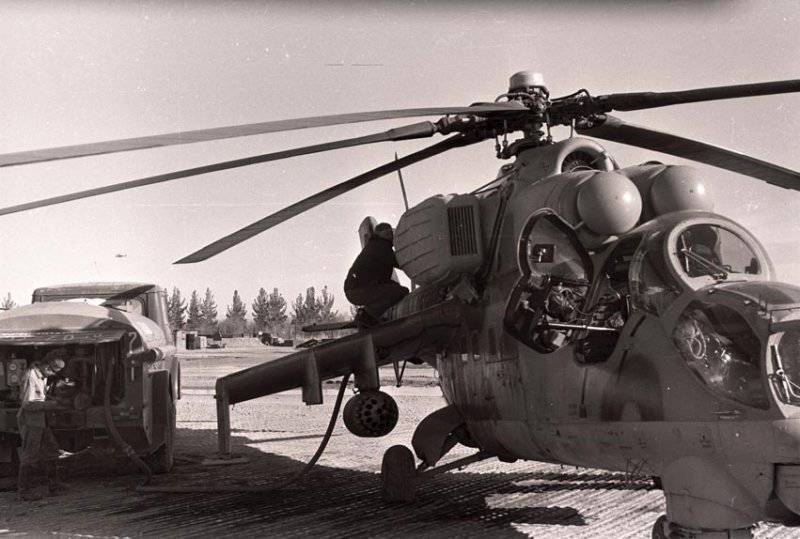
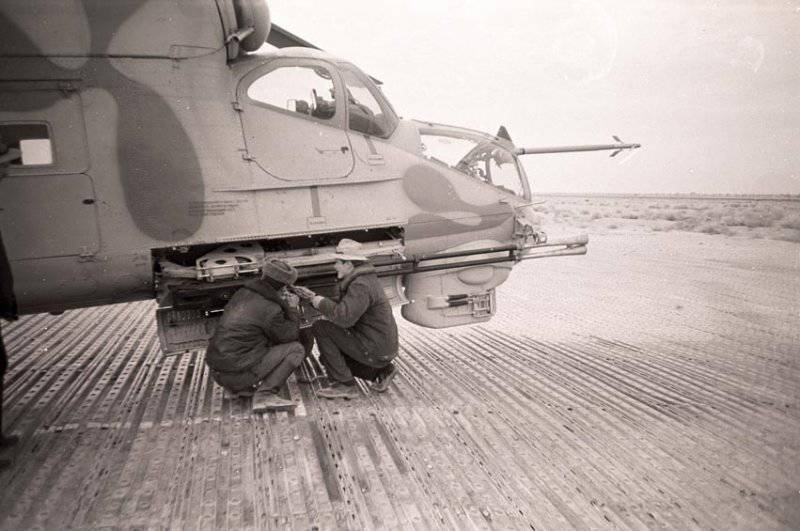
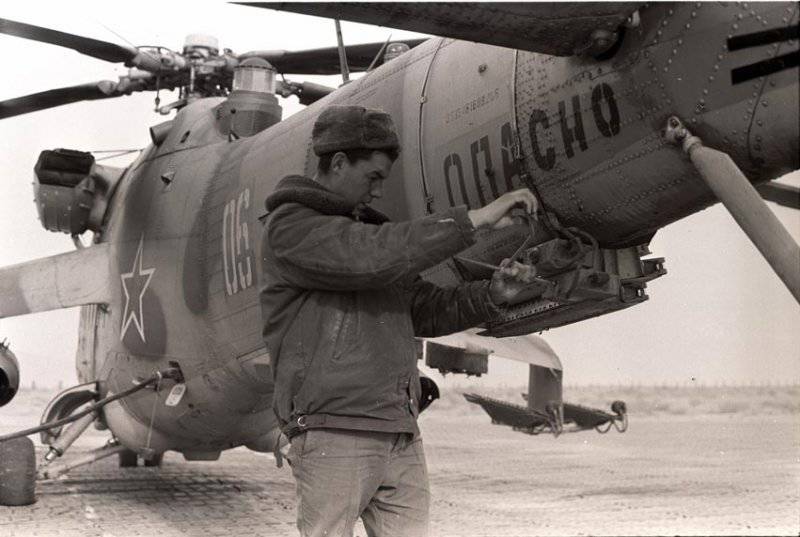
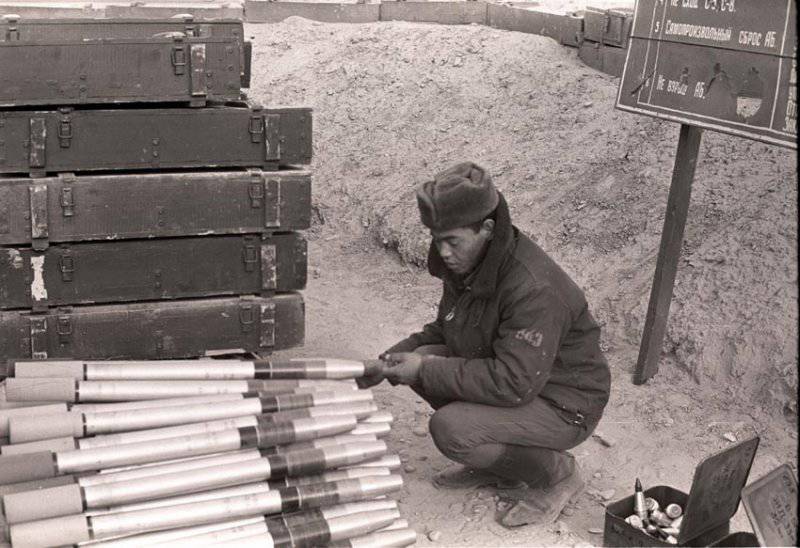
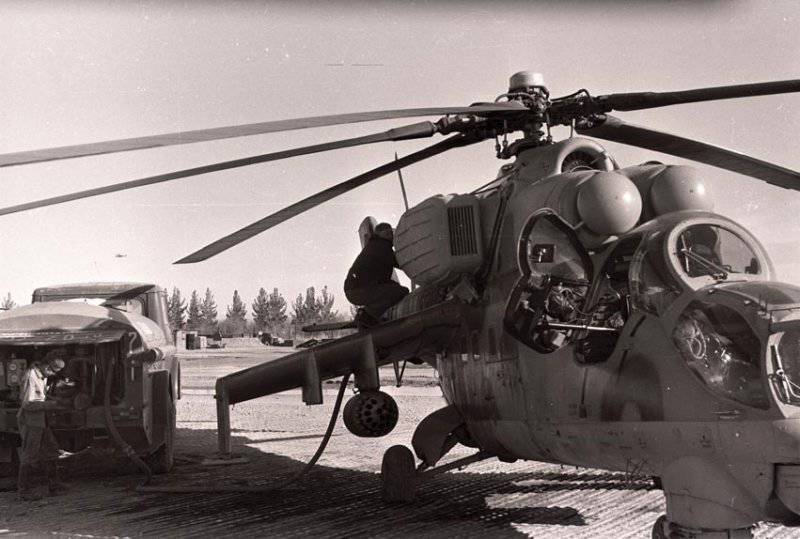
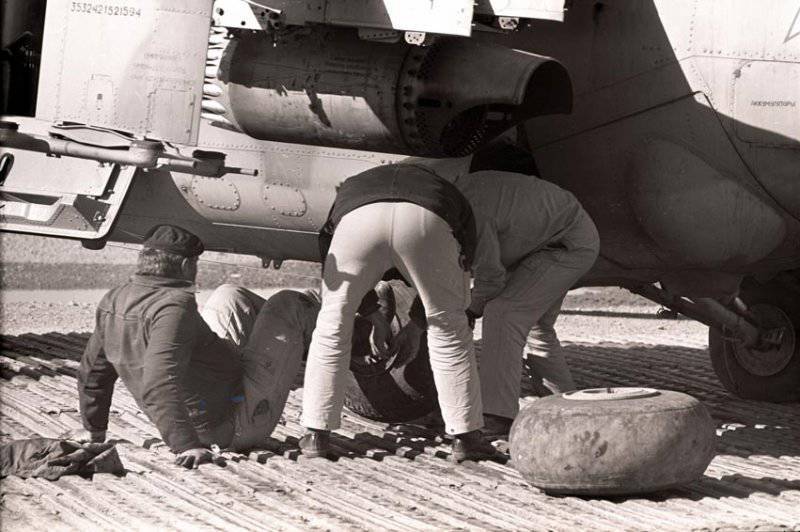
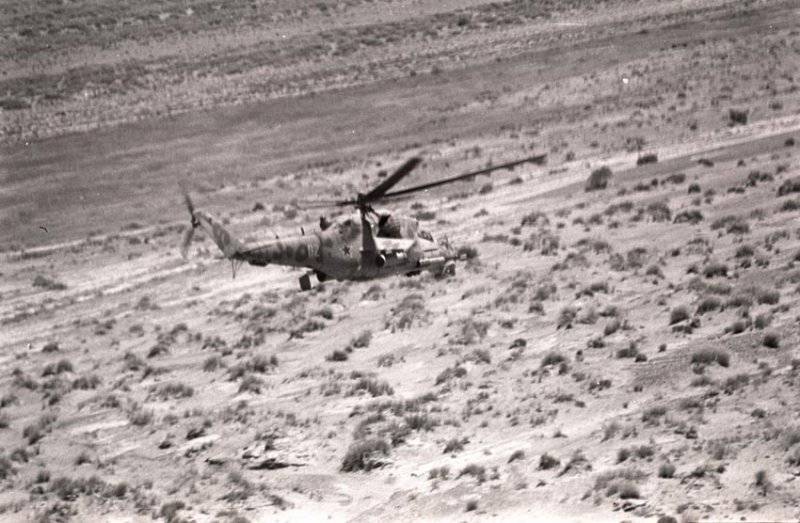
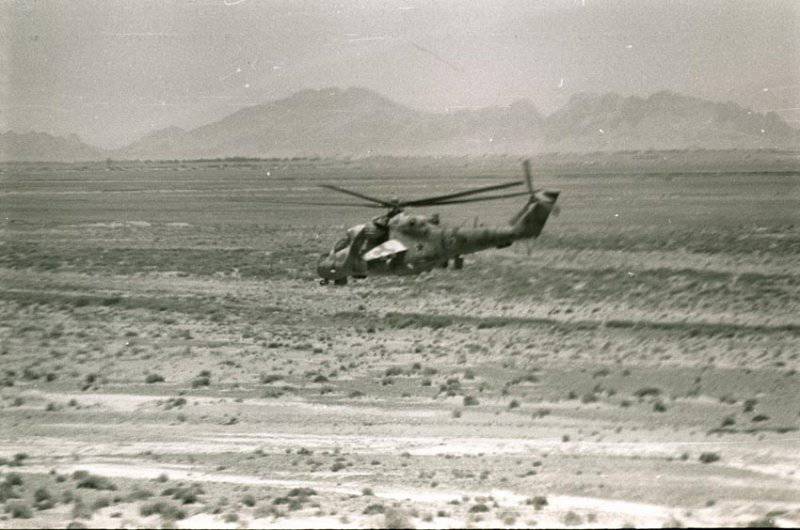
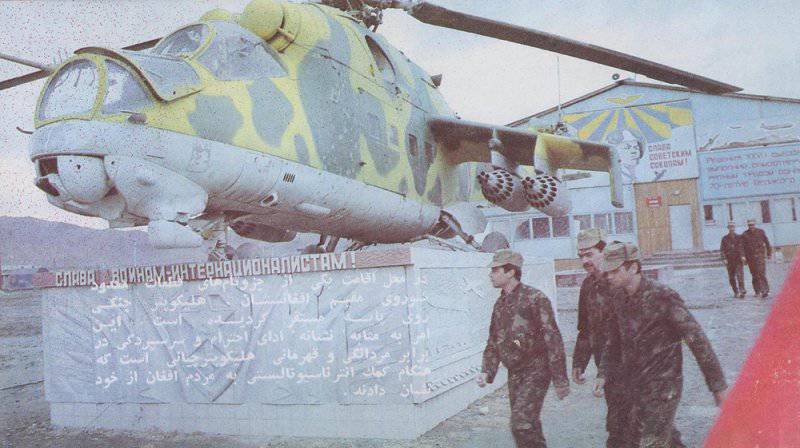
Information